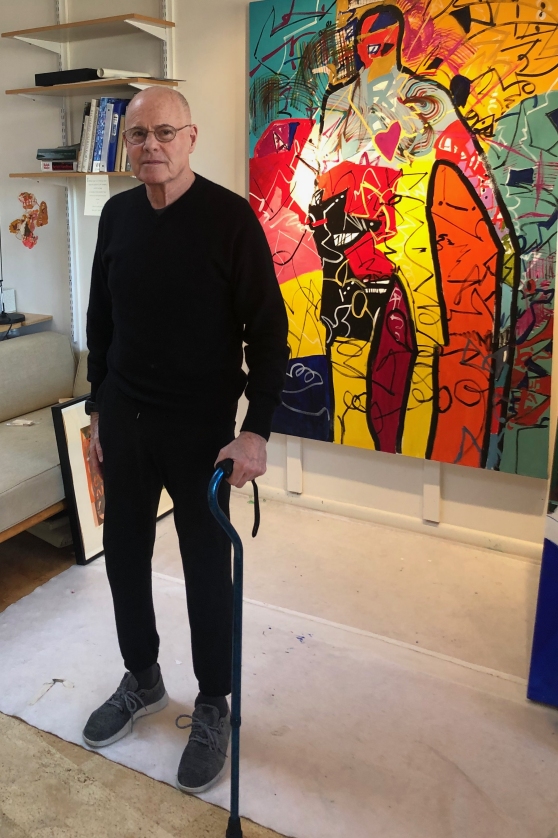Artist’s Statement

Photograph by M. Bruce Lustig
I have been painting and drawing for most of my life and, in more recent years, also making prints. These creative efforts are a means of grappling with the impulses and struggles that make up the way I see my place in the world. In a work of art I am pleased with, I have succeeded in wresting a sense of order from the chaos of an incomplete and unbalanced space. I create the chaos and then I resolve it.
After making drawings and paintings of plants, landscapes, and buildings over many years, I decided to try abstraction. This change opened up a new world for me to explore how I could express my feelings—at times, joy, at other moments, sorrow, as well as pain and fear—more directly. This gave me far greater power and the freedom to experiment continually.
The painters who have influenced me most are Jackson Pollock, Willem de Kooning, and Richard Diebenkorn, whom I consider the pre-eminent artists of abstract expressionism. I have tried to emulate them in my own small way.
My choice of paints has varied. Earlier in my career, I used oil predominantly and, more recently, acrylic. For the last several years, I have moved towards much brighter colors in more open space, and to significantly larger canvases.
Over time, my color palette has evolved. For many years, I focused on making paintings that were predominantly monochromatic (black, yellow, red, etc.) with subtle inclusion of other colors onto the surface, as well as from underneath.
Today, my colors are much brighter. I use yellow in many shades as well as orange, green, and blue, with brown as an accent, making connections between the larger yellow sections. There are many extended narrow lines in black as well as other colors that weave the work together. I work rapidly, pacing the studio to look at the painting up close, and then from a distance. I often rotate the canvas so I can see where there is imbalance, flinging paint to create lines and movement. This new focus has produced very large paintings that are filled with color, carefully constructed so that every mark attains its rightful place in equilibrium.
Besides the paintings, I have also made many monoprints using colorful inks. Printmaking opened new opportunities for me to experiment and innovate. Working with Susan Goldman—a master printmaker—in her studio, and using the press, I have been able to combine the traditional ways of creating multiple prints with my interest in creating monoprints. I have made these by layering cut-ups of photographs, drawings, and various flat objects that can be permanently attached to the surface of the print. This process allows me to make a unique statement in each piece.
My hope is that viewers will be drawn in, will want to look at the work for a minute or two because the image gives them a vision of the incredible power, ambiguity, intricacy and beauty of our lives.
Michael Gross
Bethesda MD